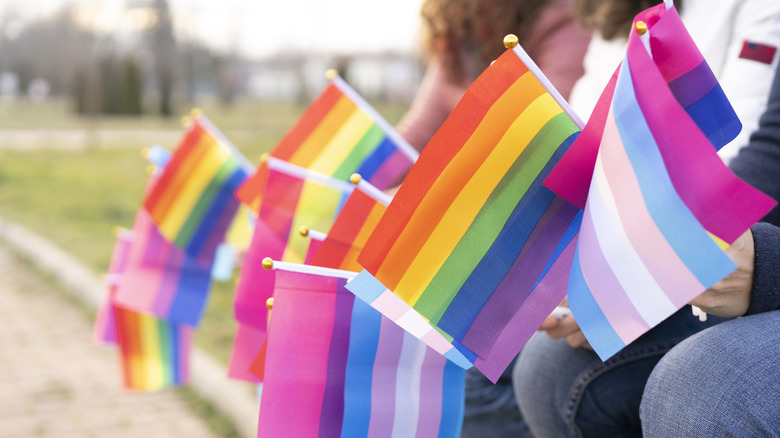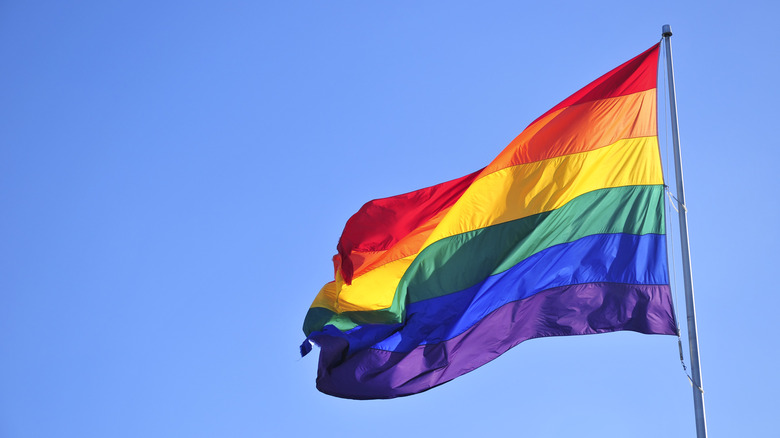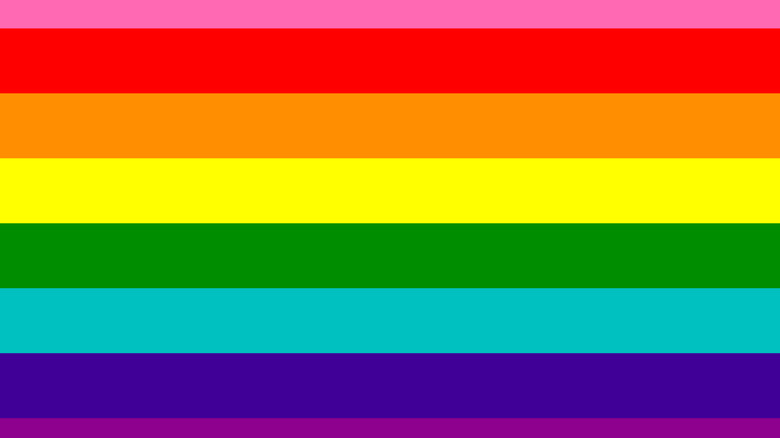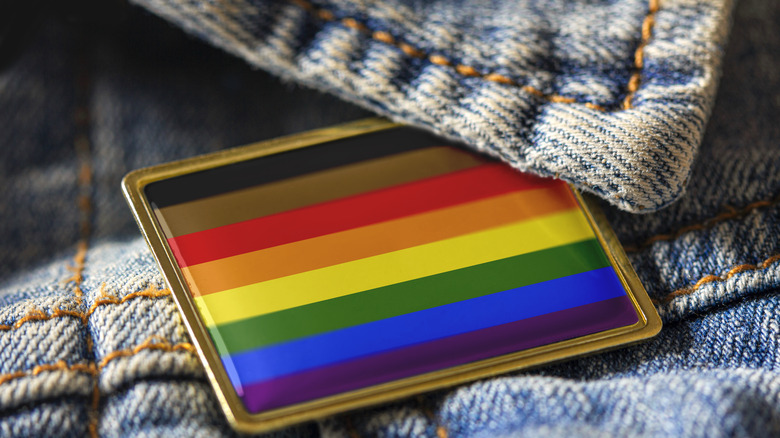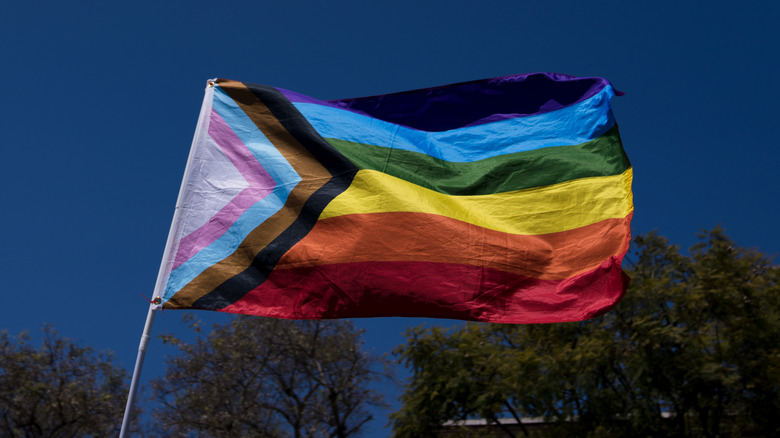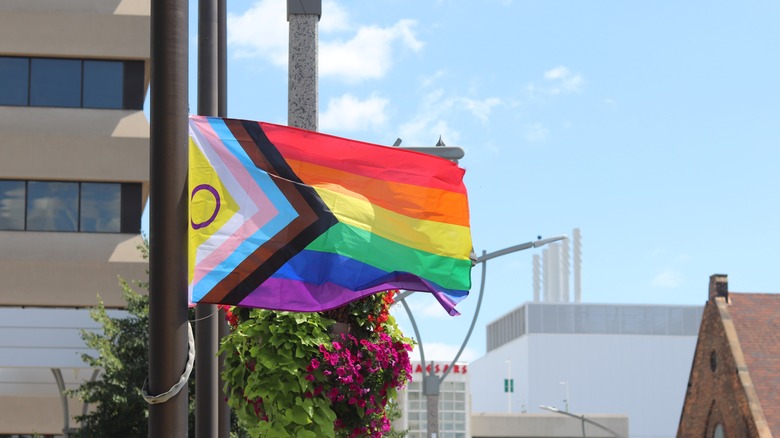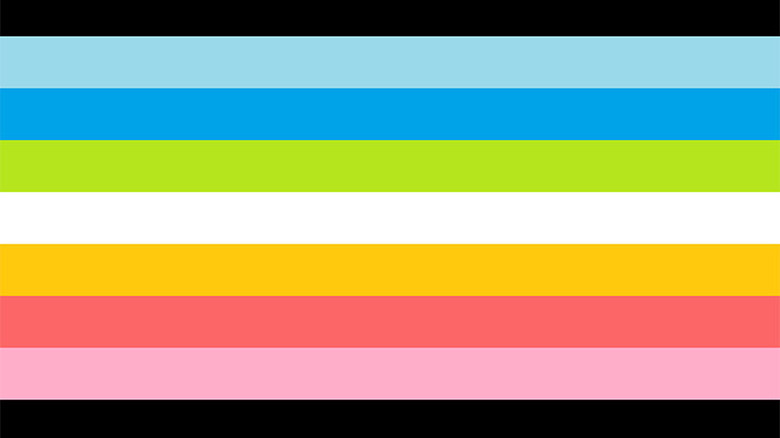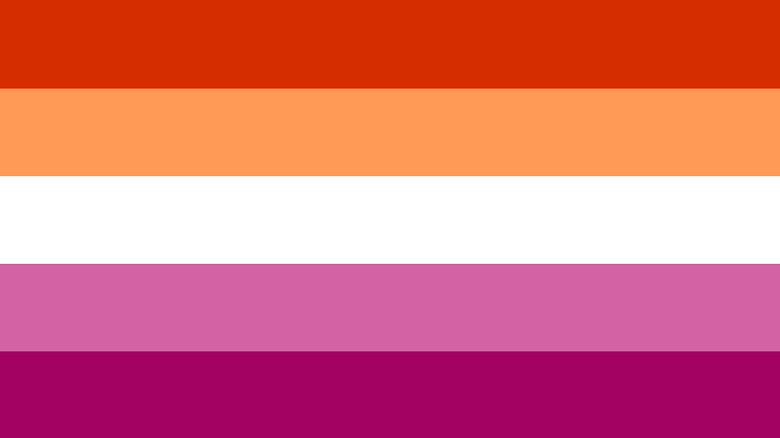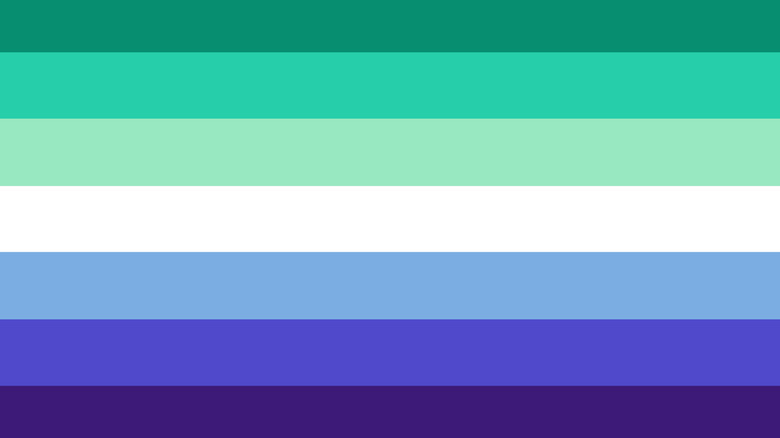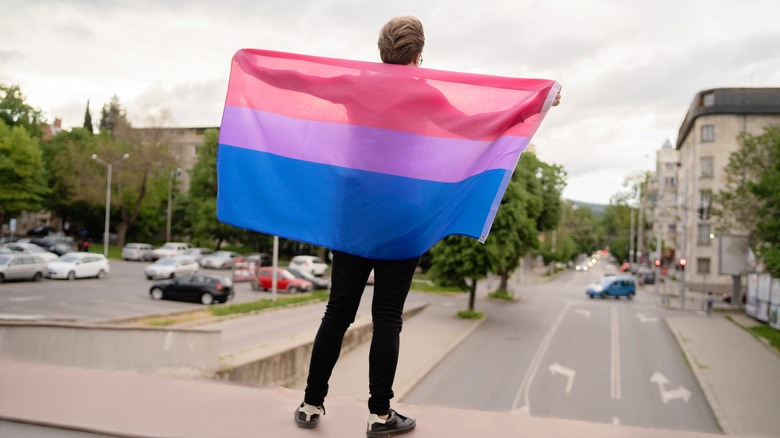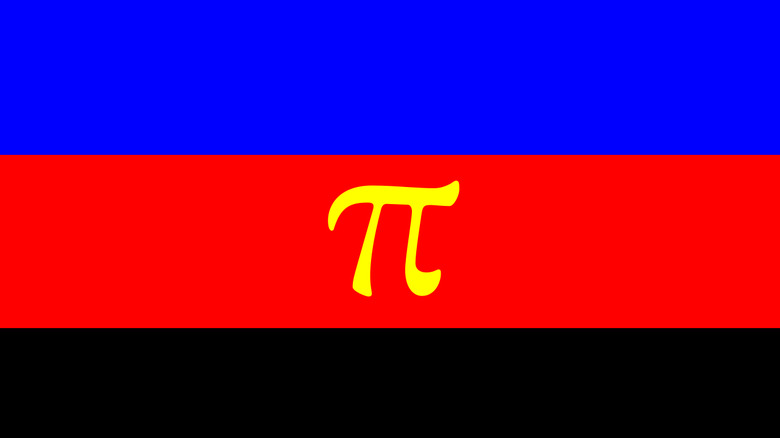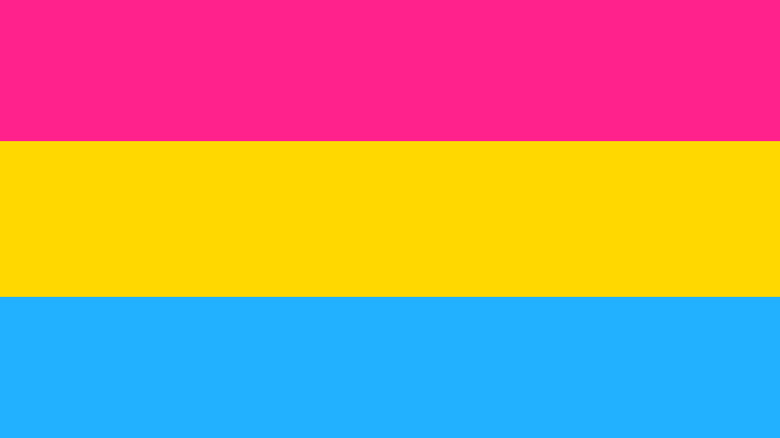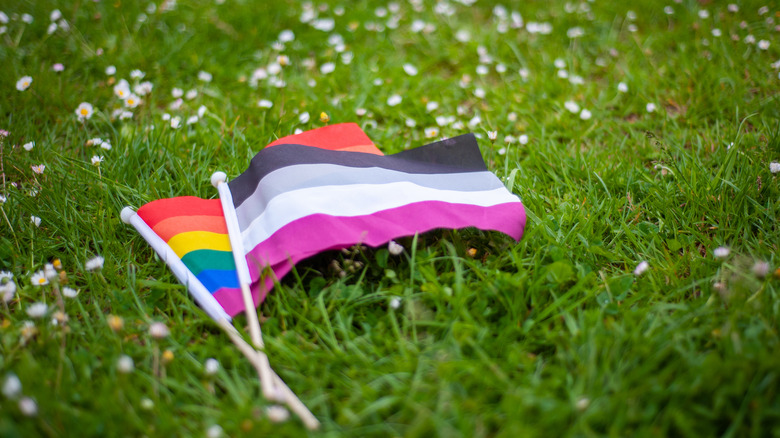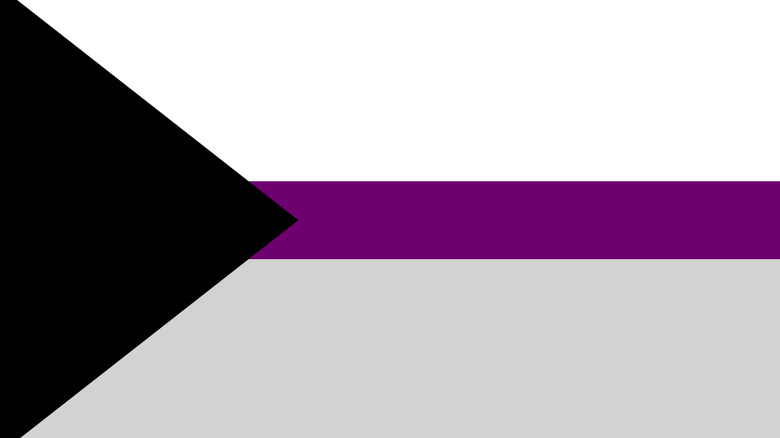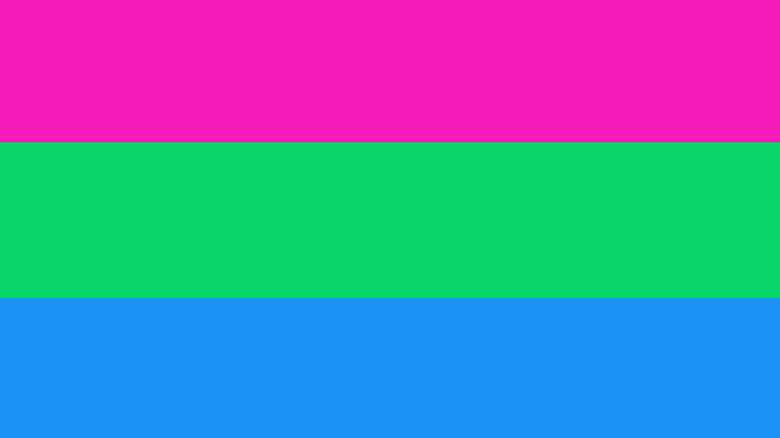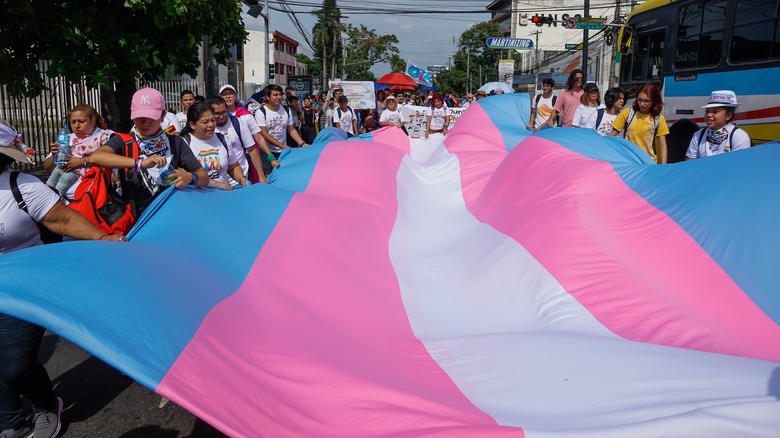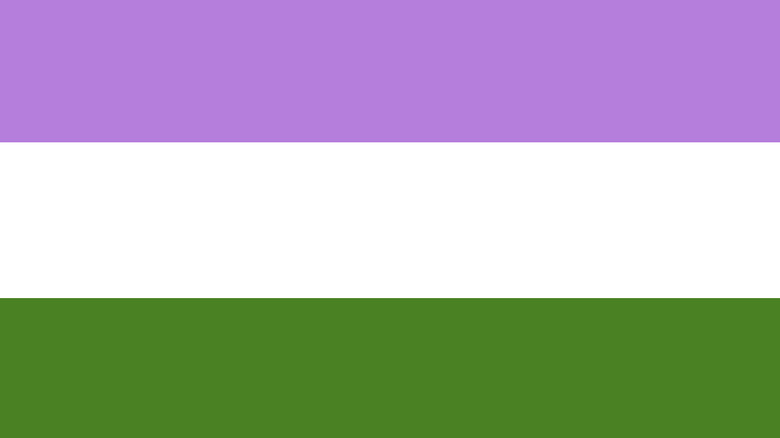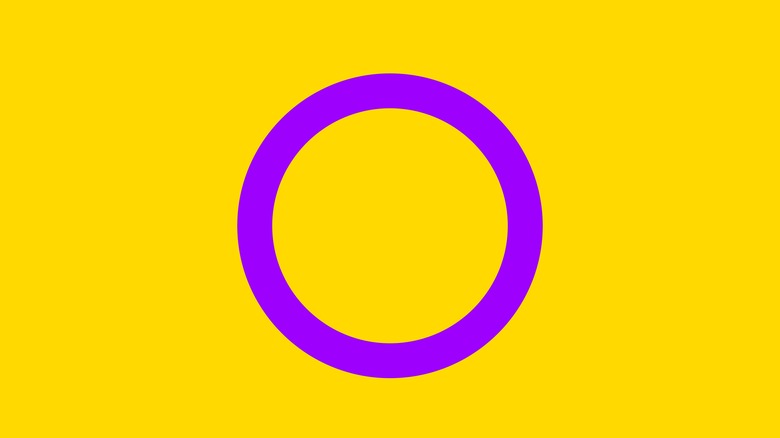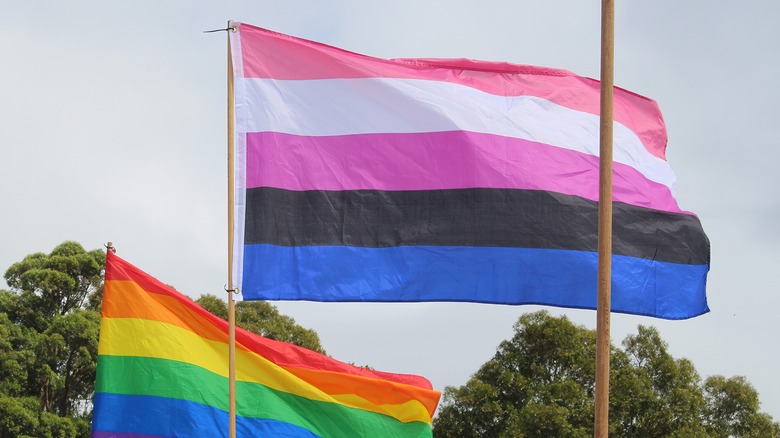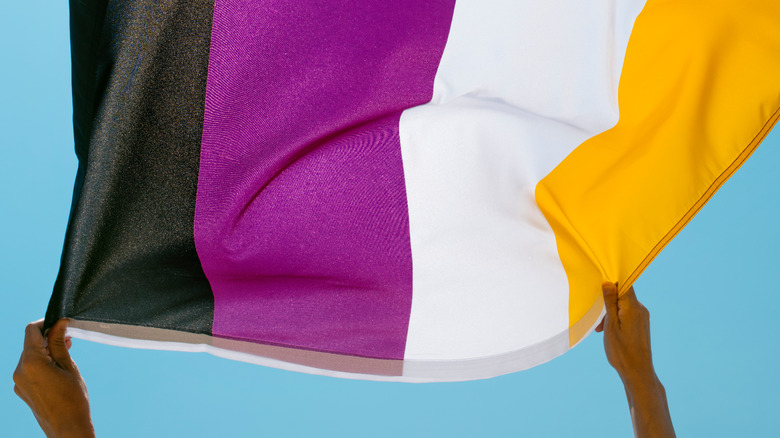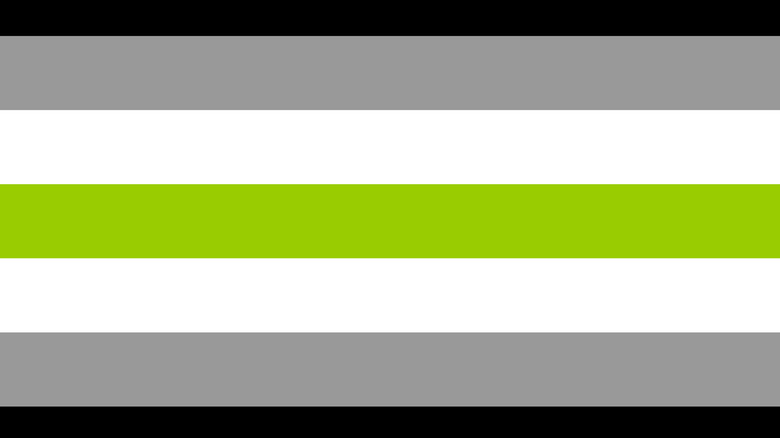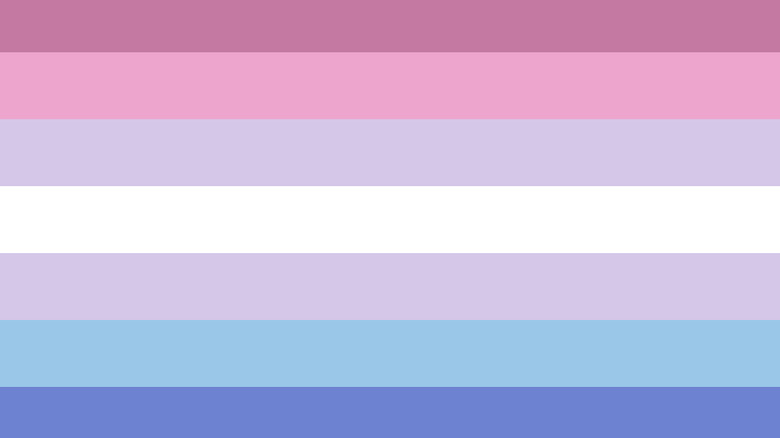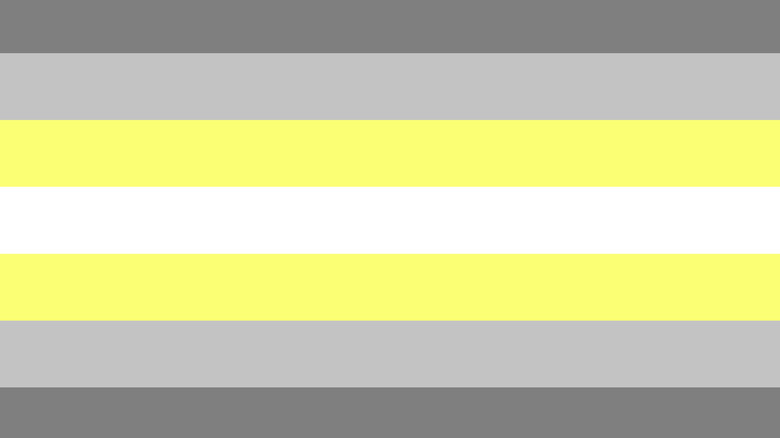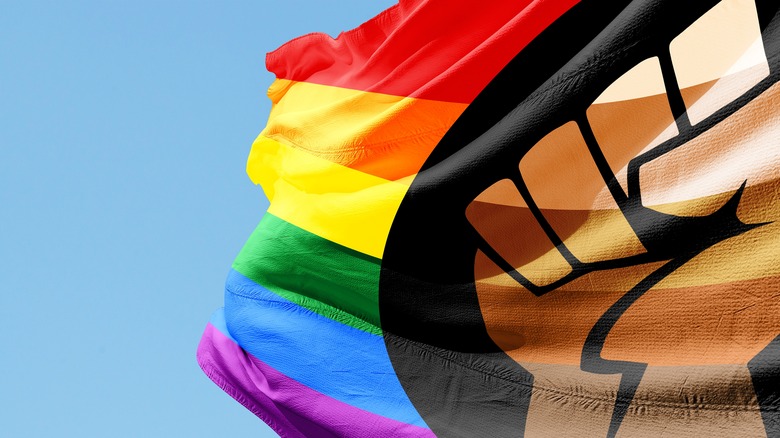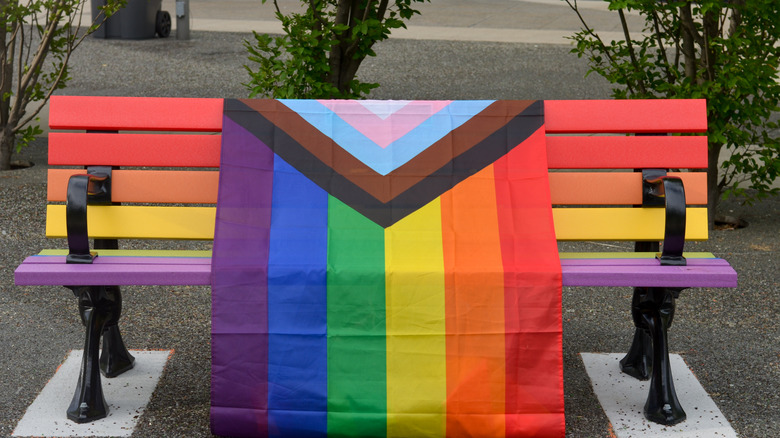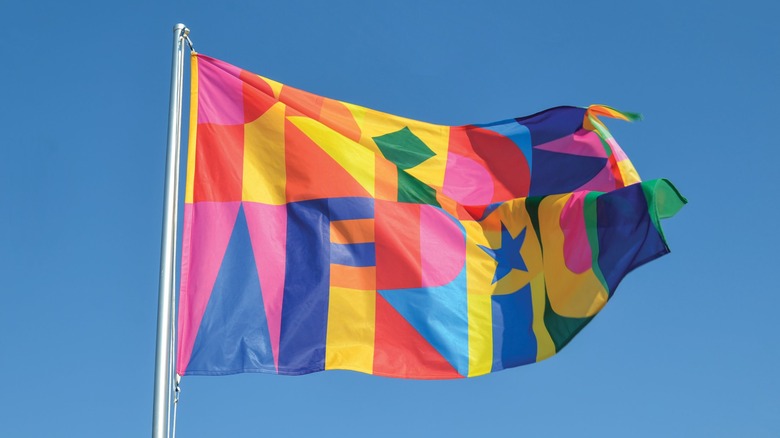Pride Flags 101: Your Guide To What Each One Represents In The LGBTQ+ Community
The rainbow Pride flag has been a bright and bold symbol of the LGBTQ+ movement for over 40 years. In 1978, Harvey Milk commissioned artist Gilbert Baker to create a symbol of gay pride, and the original Pride flag was born. (And in case you didn't know, the traditional rainbow flag most people see and use today is actually the second iteration of the Pride flag and not the original!)
As LGBTQ+ Pride has moved to be more inclusive throughout the years, you've probably seen other variations of the famous flag. Many people may not realize just how many individual flags exist to represent all of the multifaceted elements of the LGBTQ+ Umbrella. From flags for specific sexual orientations to flags for gender expression and intersectionality, there are actually 22 flags across four categories (and, yes, it can be difficult to remember them all). Whether you're looking to celebrate Pride in your own way or are already preparing for your local Pride parade there is no better time to brush-up on your flag knowledge. Here's your guide to the different LGBTQ+ Pride flags you might find during your Pride celebrations this year.
Traditional Pride Flag
First introduced in 1978, the classic rainbow striped flag is easily the most popular and well-known umbrella symbol representing the larger LGBTQ+ community. Visible on shop fronts, the sidelines of Pride events, bumper stickers, and in emoji form, this flag is commonly thought of as encompassing all of the identities of the LGBTQ+ community.
But while this is the most famous flag, it's actually not the original. A prior version was developed by artist Gilbert Baker in the late '70s that included additional colors. After Harvey Milk was assassinated in November of 1978, demand for the original Baker designed, eight-stripe rainbow flag surged This led to manufacturing issues that required the hot pink stripe to be removed. At the same time, Baker decided to remove the turquoise stripe (as a design choice), leaving the six-color Pride flag we know so well today.
Gilbert Baker Pride Flag
The original Pride flag! You might be surprised to see some extra colors compared the more common rainbow flag you're used to seeing. This design is the creation of Gilbert Baker, a famous artist and activist
In 1978, San Francisco City Supervisor Harvey Milk, the first openly gay U.S. politician, commissioned Baker to design the flag for the annual Gay Freedom Day event in the city. Baker then appointed a team of volunteers to help with the sewing and coloring process to build the original massive 20-yard-long rainbow flag that debuted at the parade on June 25, 1978.
In his memoir "Rainbow Warrior," Baker shared that the rainbow design was partially inspired by his experiences in the San Fransisco dance scene. "Dance fused us, magical and cleansing. We were all in a swirl of color and light. It was like a rainbow," he wrote. The artist also wanted each color to symbolize a different element of the LGBTQ+ identity, with hot pink representing sex, red representing life, orange representing healing, yellow representing sunlight, green representing nature, turquoise representing magic and art, indigo representing serenity, and purple representing the spirit of all LGBTQ+ people. A smaller version of the original flag went on display at the Museum of Modern Art following the legalization of gay marriage in the U.S.
Philadelphia Pride Flag
Unveiled during the city's 2017 Pride event, the Philadelphia City Council commissioned this flag in order to include queer communities of color within the larger rainbow umbrella. They argued that communities of color had often been overlooked within the larger LGBTQ+ movement, and a series of high-profile stories exposing racism in Philadelphia's LGBTQ+ community kicked the City to action. Amber Hikes, the former executive director of the Philadelphia Office of LGBT Affairs told The Inquirer, "For years, there were conversations about discrimination within the LGBTQ community. Specifically, discrimination in bars, in places of public accommodation, a lack of representation in the leadership of our community." The City decided to directly honor the contributions of these communities of color by adding a black and brown stripe to the top of the Traditional Pride flag.
Progress Pride Flag
Building on the momentum created by the Philadelphia Pride Flag, artist Daniel Quaser added a white, pink, and light blue stripe to the flag less than a year later to form what is called the Progress Pride Flag. These new additions are not only intended to represent the Trans community, they also serve as a way to call for a more inclusive society. Quaser also reimagined the black stripe from the Philadelphia Pride Flag to not only represent Black members of the community, but also as a means to honor those who died during the HIV/AIDS crisis.
Intersex-Inclusive Progress Pride Flag
Combining the designs of the 2018 Progress Pride Flag and the 2013 Intersex Flag (created by Morgan Carpenter), this 2021 flag directly includes the intersex community by incorporating the community's signature yellow and purple flag design. This new flag was created by Valentino Vecchietti, an intersex writer and media personality, of Intersex Equality Rights UK, and is currently the most up-to-date LGBTQ+ flag.
Queer Pride Flag
This flag was created in 2015 as a way to represent all different aspects of queerness. Despite being less well-known than other Pride flags, it is especially meaningful as the word queer becomes more celebrated and used in everyday life. The two different shades of pink stripes and blue stripes next to each other represent same-gender attraction, while the orange and green stripes represent non-binary and gender non-confirming members of the community. The black and white stripes represent asexual, aromantic, and agender spectrum individuals.
Lesbian Pride Flag
There are actually a lot of different Lesbian Pride flags as many members of the community don't believe a single flag could be representative of the diversity within it. With that being said, this flag, created by Emily Gwen in 2018, is the most widely recognized and used. With multiple shades of pink, red, and orange the flag is meant to showcase the diversity of femininity within the greater lesbian community.
Gay Men's Pride Flag
The original version of the gay men's pride flag had only green, blue, and white, which was seen as an exclusionary to the trans community as it focused primarily on cisgender gay men. In order to be more trans-inclusive, this second version was made with added different stripes of blue and green. Fun fact, this flag was created by a Tumblr user: @gayflagblog.
Bisexual Pride Flag
Created by Michael Page in the late nineties, this sexual orientation flag was made to bring awareness to the bisexual community, which encompasses those who experience attraction to more than one gender. In a now deleted personal website, Page shared that each stripe represents the multiplicity of the bisexual experience. "The key to understanding the symbolism of the Bi Pride Flag is to know that the purple pixels of color blend unnoticeably into both the pink and blue, just as in the 'real world,' where bi people blend unnoticeably into both the gay/lesbian and straight communities," they wrote. Page also shared they drew inspiration from the work of Boston bisexual artist Liz Nania, who created the famous "Biangles" design in 1985 that depicted a blue and magenta triangle overlapping to honor bisexuality.
Polyamory Pride Flag
Though many people may be just learning about polyamory thanks to the internet, people have been openly identifying as polyamorous, or 'poly' for short for more than 50 years. The community consists of those who have consenting relationships with more than one person.
In 1995, Jim Evans created a flag to represent that unique experience. Each color of the Polyamory flag represents a different aspect of the orientation. Blue represents the openness and honesty, red represents love and passion, and black represents solidarity for those who must hide their polyamorous relationships. A noticeable quality that separates this flag from other Pride flags is the large Pi sign in the middle. It is meant to represent the infinite options available to polyamorous people.
Pansexual Pride Flag
This flag was created in 2010 to represent the unique perspective of pansexual people and to distinguish them from bisexuals, which, traditionally, only represented those with attraction to other people who identify with the gender binary. People who identify as pansexual however, can be attracted to all people (either emotionally, romantically, or sexually) of any gender identity, including non-binary and gender nonconforming people. Within the flag, the pink stripe represents their attraction to women, the blue stripe represents their attraction to men, and the yellow stripe represents their attraction to everyone not on the gender binary.
Asexual Pride Flag
Asexual people, or Aces, do not experience sexual attractions to anyone, but within the community, there is a spectrum. Some asexual people still seek out romantic relationships and experience romantic feelings. In 2010, The Asexual Visibility and Education Network hosted an online contest looking for a flag that could honor this specific identity. The colors represent asexuality (black), gray-asexuality and demisexuality (gray), non-asexual allies (white), and community (purple).
Demisexual Pride Flag
Assumed to be based on and inspired by the Asexual Pride Flag, the Demisexual Pride flag appeared online in 2010, though the exact creator is unknown. It was made to represent Demisexuals, who only form a sexual attraction to others after forming emotional connections first. Black represents asexuality, gray represents demisexuality, white represents sexuality in general, and purple represents community.
Polysexual Pride Flag
Not to be confused with pansexual individuals, who are attracted to people of all genders and identities, people who are polysexual experience attraction to some genders, though not all. Some sex therapists and human sexuality researchers have argued it is a term for those who are attracted to three or more genders, though not all polysexual individuals may identify with this definition.
This flag was introduced Tumblr in 2012 to honor people who are attracted to multiple genders that may not identify with the experience of being pan or bisexual. The blue stripe represents a polysexual person's attraction to men, the pink represents their attraction to women, and the green represents their attraction to those who exist outside of the gender binary.
Transgender Pride Flag
The transgender flag was created in 1999 by a US Navy Veteran named Monica Helms after she spoke with Michael Page (the creator of the Bisexual Pride Flag). She developed this flag to serve as both a symbol of the diversity of the trans community and honor the fight for freedom. Making its official debut at Phoenix Pride in 2000, the flag's blue and pink stripes represent what is thought of by Western communities as 'traditionally' male and female colors. The white stripes represent intersex, transitioning, and undefined gender people. Helms described the flag as symmetrical, "No matter which way you fly it, it is always correct, signifying us finding correctness in our lives."
Genderqueer Pride Flag
Genderqueer people do not conform to gender categories. They can view themselves as both male and female, neither male nor female, or as existing outside of the binary. Created by Marilyn Roxie in 2011, this flag honors the community. Within the flag, the purple represents androgyny, the white represents agender (not having a gender), and the green represents those who exist outside of the gender binary altogether.
Intersex Pride Flag
Developed by the co-chair of Intersex Human Rights Australia, Morgan Carpenter, in 2013, this flag represents the umbrella of intersex individuals who have differences in their sex traits and/or reproductive anatomy. Carpenter chose yellow and purple due to these colors being viewed as conventionally gender-neutral, and described the circle in the middle of the flag as representing, "wholeness and completeness, and our potentialities."
Genderfluid Pride Flag
JJ Poole (who identifies as agender and pansexual) created this flag in 2013 to honor people who don't have a fixed gender. Genderfluid people experience gender identity and/or expression changes depending on specific times and circumstances. Pink represents femininity, blue represents masculinity, white represents the lack of gender, black represents all genders, and purple represents the combination of femininity and masculinity.
Nonbinary Pride Flag
This flag was developed in 2014 to represent members of the LGBTQ+ community that don't identify with either gender binary or with the overall gender binary itself. This is distinct form those in the trans community, who identify with a gender other than the one they were assigned at birth.The yellow on the flag represents gender outside of the binary, while the white represents those with multiple genders. Purple honors people who exist somewhere between the male and female binary, while black represents people with no gender at all.
Agender Pride Flag
Although some agender individuals may identify as nonbinary, the terms are not interchangeable. Nonbinary can encompass people who identify with a gender outside of the cis male-female binary, whereas agender typically identify as gender neutral or having no gender at all. Created by New York-based artist and activist Salem Fontana in 2014, this flag first appeared on Tumblr in order to represent Agender individuals.
The black and white represents the absence of gender, the gray represents semi-genderless people, and the green represents non-binary people. This flag was designed to be reversible (like the Transgender Pride flag) so that it can be hung in either direction.
Bigender Pride Flag
The exact creation date and designer of the Bigender flag remain unknown, though the flag became officially recognized in 2015. Due to the uncertainty of its origin, the exact meaning of each colored stripe in this flag is assumed. Some claim the flag is meant to represent people who identify with two genders. This can mean being both female and male or it can include non-binary identities; the latter of whom do not identify with the binary. Bigender people may experience two gender identities at the same time or experience changing gender over time. Fun fact: there are actually several accepted Bigender flags.
Demigender Pride Flag
Just like the Bigender flag, the details, year, and creator of the Demigender flag are unknown. The flag was created to represent Demigender people who have an attachment (but not necessarily a full connection) to any particular gender identity. For some, this can also mean a lack of connection or attachment to the concept of gender itself.
Queer People of Color Pride Flag
Even though this flag premiered at San Francisco Pride in 2019, it didn't gain popularity until a year later during widespread Black Lives Matter protests throughout the U.S. The designer is unknown, but the flag is thought to symbolize how the fights for racial and LGBTQ+ equality intersect. Today, many activist institutions vie w the flag as an intersectional flag meant to represent marginalized people in the community.
Two-Spirit Pride Flag
Two-spirit is an umbrella term intended to describe Indigenous Americans who fulfill or exist outside the traditional western notions of male and female gender binary. The term can have different meanings depending on the region. Being two-spirit can describe either a dual sexual, gender, or spiritual identity (or a combination of any/all of these identities) so it's important to emphasize that the term is not synonymous with the Indigenous and Native gay communities. On the flag, the two feathers represent masculine and feminine identities, while the circle behind them represents a kind of unification of those genders into a separate identity altogether.
Pride of Africa Flag
Debuting at Johannesburg Pride in 2019, this design was created by the Pride of Africa Foundation as a means to capture the specific diversity of the queer community on African continent. As the first ever pan-African LGBTQ+ flag, designers came up with the design by pulling elements from the flag designs of all 54 African countries. Johannesburg Pride partnered with a design firm to create the new flag and unveiled a tagline at the same time, "Proudly African. Authentically you."
